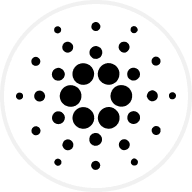Cardano’s Chang and Plomin Hard Forks: Pioneering Decentralized Governance and Scalability
Cardano Holders Upgrade: Transitioning to Decentralized Governance
Cardano, a leading blockchain platform, is entering a transformative phase with its roadmap to the Voltaire era. This transition is marked by pivotal upgrades, including the Chang and Plomin hard forks, which aim to establish a fully decentralized governance model. These advancements are not just technical milestones but also critical steps toward redefining blockchain ecosystems.
What Is the Voltaire Era?
The Voltaire era represents Cardano’s vision of a self-sustaining, community-driven blockchain. By empowering ADA holders and introducing innovative governance mechanisms, Cardano seeks to address long-standing challenges in decentralized decision-making, scalability, and security. This era is designed to ensure that the blockchain evolves through collective input and transparent processes.
Understanding the Chang and Plomin Hard Forks
The Chang Hard Fork: Laying the Foundation for Decentralized Governance
The Chang hard fork is a cornerstone of Cardano’s roadmap to the Voltaire era. It focuses on enhancing the blockchain’s governance framework and scalability, setting the stage for a more inclusive and efficient decision-making process.
Key Features of the Chang Hard Fork:
Improved Governance Mechanisms: Establishing the groundwork for decentralized decision-making.
Scalability Enhancements: Preparing the network to handle increased transaction throughput and user activity.
The Plomin Hard Fork: Empowering ADA Holders
Building on the Chang upgrade, the Plomin hard fork introduces groundbreaking features that empower ADA holders to actively participate in governance decisions. This upgrade is a significant step toward community-driven development.
Highlights of the Plomin Hard Fork:
Voting Power for ADA Holders: Enabling the community to directly influence protocol changes, treasury allocations, and future upgrades.
Delegated Representatives (DReps): ADA holders can delegate their voting power to trusted representatives, ensuring checks and balances in governance.
Stake Pool Operator (SPO) Involvement: SPOs play a crucial role in approving hard forks, with thresholds like 51% or 85% required for upgrades to proceed.
Scalability and Security Improvements in Cardano
Cardano’s upgrades aim to significantly enhance scalability and security, making the platform more competitive for decentralized applications (dApps) and enterprise use cases.
Scalability Enhancements:
Transaction Throughput: The network’s transaction capacity is expected to increase from 250 transactions per second (TPS) to over 1,000 TPS.
Improved dApp Support: Higher throughput positions Cardano as a more attractive platform for developers and businesses.
Security Enhancements:
Advanced Protocols: New security measures safeguard the network against potential threats.
Trust and Reliability: These improvements are crucial for maintaining user confidence as Cardano’s ecosystem grows.
Comparing Cardano’s Governance Model with DAOs
Cardano’s governance model stands out due to its emphasis on checks and balances. Unlike traditional Decentralized Autonomous Organizations (DAOs), which often face challenges like excessive budgets and lack of oversight, Cardano incorporates Delegated Representatives (DReps) to ensure accountability.
Key Differences:
Checks and Balances: DReps provide oversight and prevent governance inefficiencies.
Institutional Appeal: This model is attractive to institutional investors and developers seeking a stable and transparent platform.
Historical Price Trends and Market Sentiment Around ADA
While the Chang and Plomin hard forks represent significant technical advancements, historical data suggests that hard forks alone do not guarantee price increases for ADA. Market conditions, adoption rates, and broader investor sentiment play a more substantial role in influencing price performance.
Insights from Previous Hard Forks:
Mixed Results: Hard forks in the blockchain space have shown varied impacts on token prices.
Focus on Long-Term Growth: Cardano’s emphasis on adoption and ecosystem development is likely to yield more sustainable results than short-term price movements.
Institutional Interest and Adoption of Cardano
The upgrades are expected to attract more developers, users, and institutional investors to the Cardano ecosystem. By addressing scalability and governance challenges, Cardano positions itself as a viable platform for decentralized finance (DeFi), non-fungible tokens (NFTs), and other emerging use cases.
Why Institutions Are Interested:
Innovation: Cardano’s commitment to technical excellence and community-driven development.
Scalability: Enhanced transaction throughput makes the platform suitable for enterprise applications.
Governance Transparency: The Voltaire era’s governance model appeals to organizations seeking accountability and stability.
Conclusion: A Promising Future for Cardano
The Chang and Plomin hard forks mark a significant milestone in Cardano’s journey toward decentralized governance and scalability. By empowering ADA holders, enhancing security, and improving transaction throughput, these upgrades lay the foundation for a more inclusive and efficient blockchain ecosystem.
As Cardano continues to evolve, its focus on community-driven development and technical innovation positions it as a leading contender in the blockchain space. While the impact of these upgrades on ADA’s price remains uncertain, their potential to attract developers, users, and institutional investors underscores the long-term promise of the Cardano ecosystem.
© 2025 OKX. Anda boleh memproduksi ulang atau mendistribusikan artikel ini secara keseluruhan atau menggunakan kutipan 100 kata atau kurang untuk tujuan nonkomersial. Setiap reproduksi atau distribusi dari seluruh artikel juga harus disertai pernyataan jelas: “Artikel ini © 2025 OKX dan digunakan dengan izin.“ Petikan yang diizinkan harus mengutip nama artikel dan menyertakan atribusi, misalnya “Nama Artikel, [nama penulis jika ada], © 2025 OKX.“ Beberapa konten mungkin dibuat atau dibantu oleh alat kecerdasan buatan (AI). Tidak ada karya turunan atau penggunaan lain dari artikel ini yang diizinkan.

